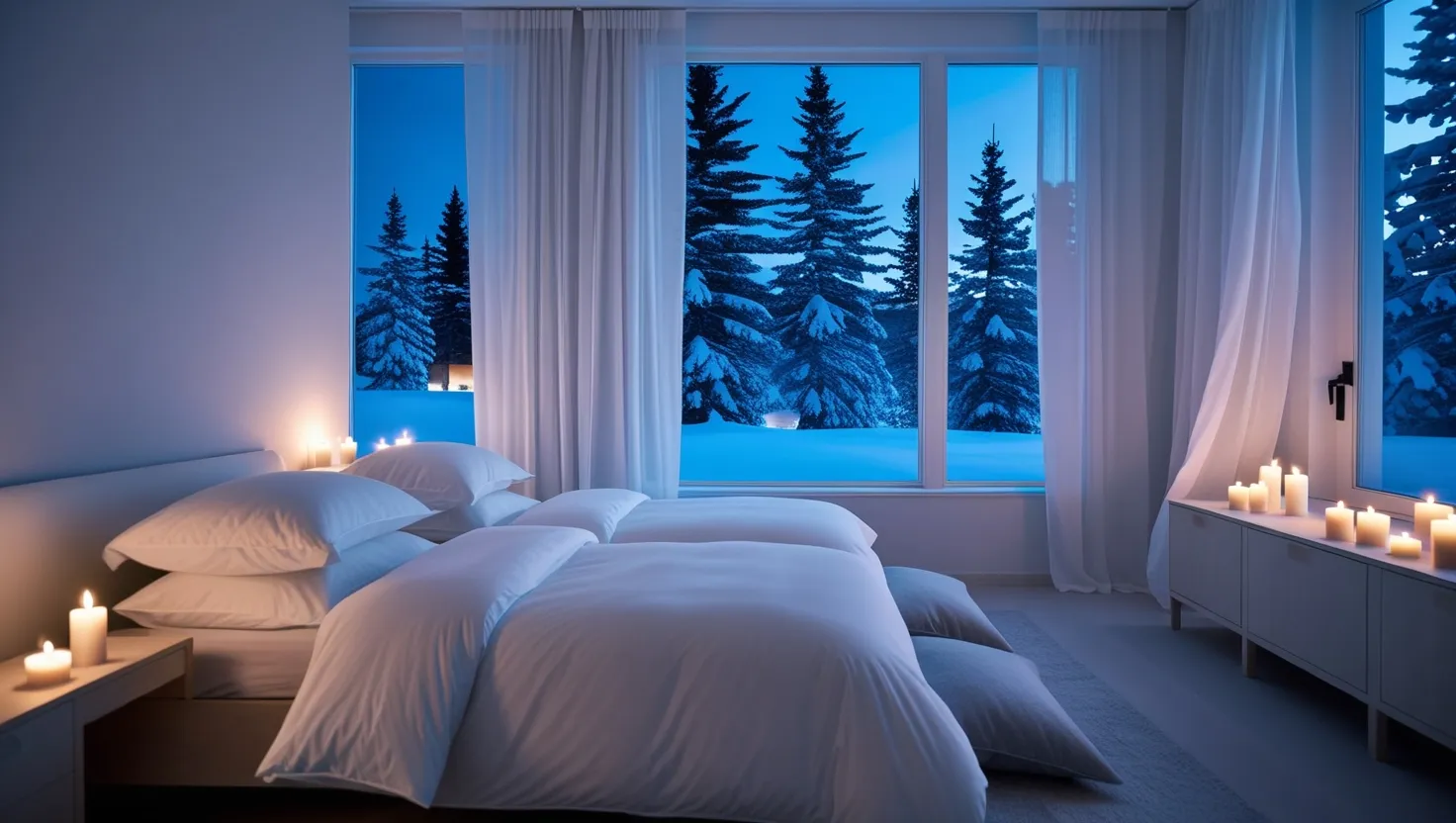As I settled into my cozy Nordic-inspired bedroom, I couldn’t help but reflect on the ancient wisdom of Scandinavian sleep practices. These time-honored traditions, honed over centuries in harsh northern climates, offer valuable insights for modern rest seekers.
The Nordic approach to sleep is deeply rooted in harmony with nature. Traditional societies in Denmark, Norway, Sweden, and Iceland developed ingenious ways to cope with extreme seasonal variations in daylight. They understood that quality sleep was essential for survival and thriving in challenging environments.
One of the most striking aspects of Nordic sleep culture is the practice of seasonal sleep adjustment. Unlike our modern tendency to maintain rigid sleep schedules year-round, Nordic people traditionally allowed their sleep patterns to ebb and flow with the changing seasons. During the long, dark winters, they naturally slept longer, while summer’s midnight sun meant shorter sleep periods.
This flexible approach aligns with our body’s natural circadian rhythms. By allowing ourselves to sleep a bit more during darker months, we can combat the winter blues and emerge refreshed come spring. It’s a gentle reminder that our sleep needs aren’t static - they evolve with the world around us.
“Sleep is that golden chain that ties health and our bodies together.” - Thomas Dekker
The concept of creating a sleep cave is another Nordic gem. In traditional homes, bedrooms were sanctuaries of darkness and tranquility. Modern interpretations of this practice involve keeping bedrooms cool (ideally between 60-67°F), completely dark, and free from electronic distractions. This environment mimics the cozy, womb-like spaces our ancestors sought for rest.
Have you ever considered how your bedroom temperature affects your sleep quality? Experimenting with slightly cooler temperatures might surprise you with improved rest.
A uniquely charming Nordic sleep tradition is the use of dual blankets for couples. Instead of sharing one large comforter, partners use individual blankets. This simple change can dramatically reduce sleep disruptions from blanket-tugging and allows each person to regulate their temperature independently. It’s a small adjustment that can lead to big improvements in sleep quality for couples.
The Nordic emphasis on pre-sleep outdoor activity is particularly relevant in our sedentary modern world. Evening walks were a common practice, helping to regulate body temperature and promote natural sleepiness. Even in urban environments, a short stroll before bed can work wonders for sleep quality.
“The best bridge between despair and hope is a good night’s sleep.” - E. Joseph Cossman
Fire meditation is a practice that harkens back to Viking times when the hearth was the center of evening relaxation. While we may not have open fires in our homes, we can recreate this calming ritual with candles. Spending the last hour before bed in soft, flickering light helps reduce exposure to sleep-disrupting blue light from screens.
How might incorporating a brief candlelit meditation into your bedtime routine change your sleep experience?
The use of sleep-inducing scents is another Nordic tradition with modern applications. Pine, lavender, and chamomile were commonly used to create a restful atmosphere. Today, we can easily incorporate these natural scents into our bedrooms through dried herbs, essential oils, or scented candles.
As I implemented these Nordic sleep practices in my own life, I noticed subtle but significant improvements in my sleep quality. The seasonal adjustment helped me feel more in tune with nature’s rhythms. Creating a cool, dark sleep environment made falling asleep easier and more restful. The dual blanket approach with my partner eliminated midnight tug-of-wars and temperature disagreements.
Evening walks became a cherished part of my routine, offering a moment of reflection and gentle exercise before bed. The practice of fire meditation - in my case, spending time with a few carefully placed candles - helped quiet my mind and signal to my body that it was time to wind down.
“A good laugh and a long sleep are the best cures in the doctor’s book.” - Irish Proverb
Incorporating sleep-inducing scents was perhaps the most enjoyable aspect. The gentle aroma of lavender or pine created an instant sense of calm and relaxation in my bedroom.
These Nordic sleep practices aren’t just quaint traditions - they’re backed by modern sleep science. The emphasis on darkness and cool temperatures aligns perfectly with what we now know about optimal sleep conditions. The practice of seasonal adjustment resonates with research on circadian rhythms and the impact of light exposure on sleep quality.
The dual blanket approach addresses a common issue in shared beds - temperature regulation and movement disturbance. Pre-sleep walks and fire meditation both help activate the parasympathetic nervous system, promoting relaxation and sleep readiness.
What aspects of your current sleep routine might benefit from a Nordic-inspired makeover?
It’s worth noting that while these practices have roots in Nordic culture, similar wisdom can be found in sleep traditions around the world. Many cultures recognize the importance of darkness, coolness, and pre-sleep relaxation for quality rest.
Adopting Nordic sleep practices doesn’t mean completely overhauling your lifestyle. Small, incremental changes can make a big difference. Start by adjusting your bedroom temperature or taking a short evening walk. Experiment with individual blankets if you share a bed. Gradually incorporate more practices as you find what works best for you.
Remember, the goal isn’t to perfectly replicate ancient Nordic sleep habits, but to draw inspiration from their wisdom and adapt it to modern life. These practices offer a gentle reminder to slow down, tune into natural rhythms, and prioritize restful sleep.
“Sleep is the best meditation.” - Dalai Lama
As our lives become increasingly fast-paced and technology-driven, there’s something deeply appealing about these time-honored Nordic sleep traditions. They offer a way to reconnect with natural cycles, create restful environments, and prioritize the restorative power of sleep.
By embracing these practices, we’re not just improving our sleep - we’re tapping into a rich cultural heritage that values rest as an essential component of a well-lived life. In a world that often glorifies busyness and constant productivity, the Nordic approach to sleep is a refreshing reminder of the importance of balance and restoration.
So tonight, as you prepare for bed, consider incorporating a touch of Nordic wisdom into your routine. Open a window for some cool, fresh air. Take a gentle evening stroll. Light a candle and spend a few moments in quiet reflection. Create a cool, dark sleep cave. And most importantly, give yourself permission to rest deeply and fully.
In doing so, you’re not just following a trend - you’re participating in a centuries-old tradition of honoring sleep as a vital, nourishing part of life. Sweet dreams, or as they say in Norway, “Sov godt!”






